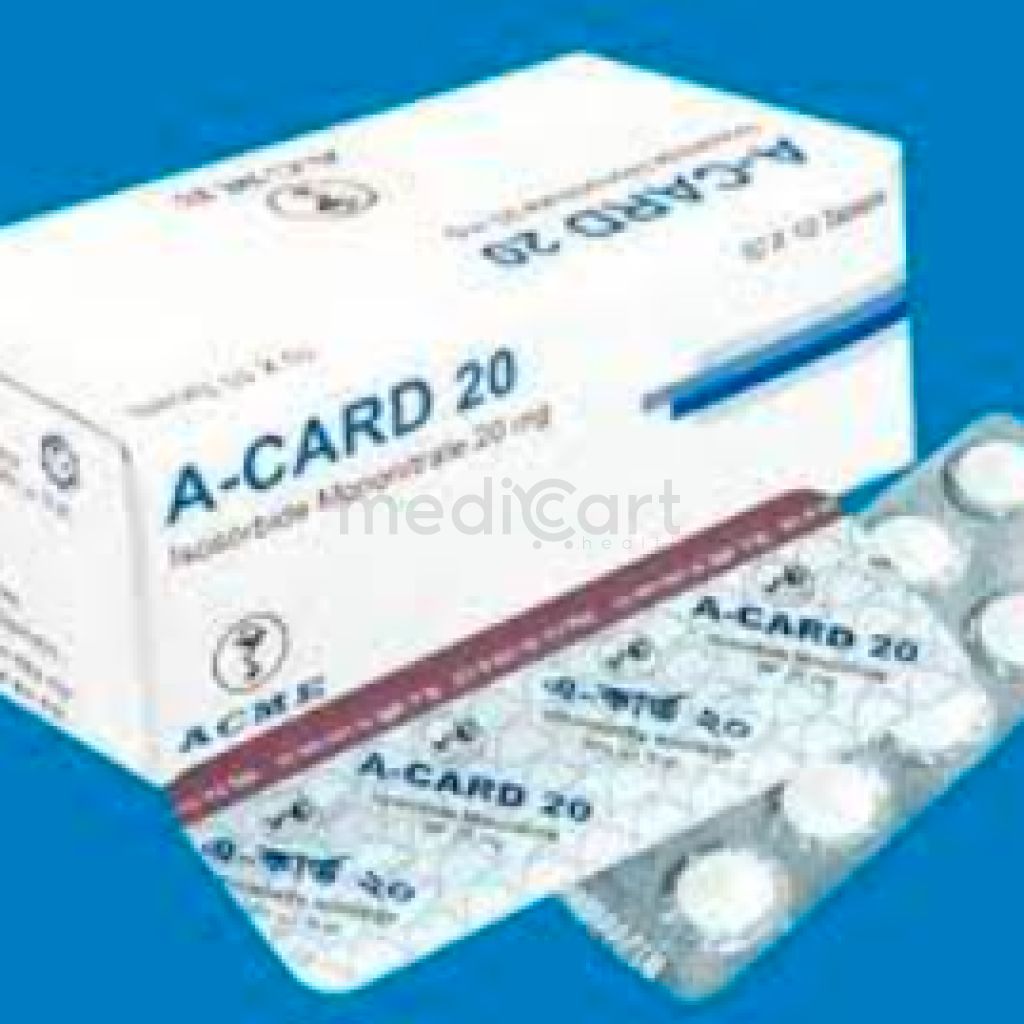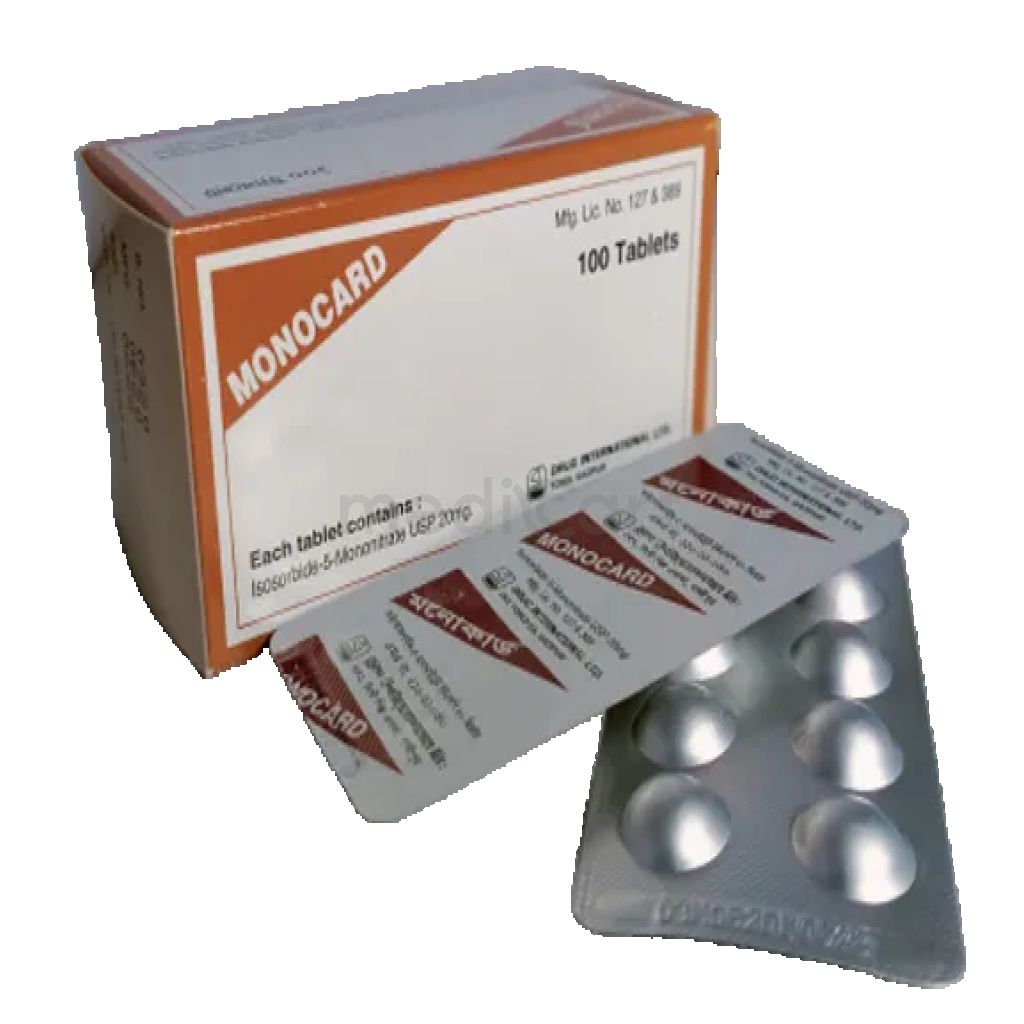

A Card 20mg
Tablet
Pack Size :
10 Tablet x 1 Strip
Generics :
Isosorbide Mononitrate
Manufacturer :
Acme Laboratories Ltd.
Best Price *
TK
14.30
* Delivery will be done in Dhaka city only.
More Information About - A Card 20mg
Description
Generic Name
Isosorbide MononitratePrecaution
Severe renal or severe hepatic impairment, hypothyroidism, malnutrition, or hypothermia. Caution in patients who are already hypotensive. May aggravate angina caused by hypertrophic cardiomyopathy. Tolerance may develop after long-term treatment. Lactation. Lactation: Unknown whether drug crosses into breast milk; use cautionIndication
Angina pectorisContra Indication
Severe hypotension or anaemia, hypovolaemia, heart failure due to obstruction, or raised intracranial pressure due to head trauma or cerebral haemorrhage.Dose
N/ASide Effect
Hypotension, tachycardia, flushing, headache, dizziness, palpitation, syncope, confusion. Nausea, vomiting, abdominal pain. Restlessness, weakness and vertigo. Dry mouth, chest pain, back pain, oedema, fatigue, abdominal pain, constipation, diarrhoea, dyspepsia and flatulence. Potentially Fatal: Severe hypotension and cardiac failure.Pregnancy Category
Name : C
Description
Animal reproduction studies have shown an adverse effect on the fetus and there are no adequate and well-controlled studies in humans, but potential benefits may warrant use of the drug in pregnant women despite potential risksMode of Action
Isosorbide mononitrate relaxes vascular smooth muscles by stimulating cyclic-GMP. It decreases left ventricular pressure (preload) and arterial resistance (afterload).Interaction
Hypotensive effects may be increased when used with alcohol or vasodilators. Concurrent use with calcium channel blockers may lead to marked orthostatic hypotension. Potentially Fatal: Significant hypotension may occur when used with phosphodiesterase-5 inhibitors.Pregnancy Category Note
Pregnancy category: C Lactation: Unknown whether drug crosses into breast milk; use cautionAdult Dose
Oral Angina Pectoris Prevention of angina pectoris caused by coronary artery disease Adult: 20 mg 2-3 times daily. Dose may range from 20-120 mg daily. As LA form: One capsule once daily. Elderly: Intiate at lower doses.Child Dose
Safety and efficacy not establishedRenal Dose
N/AAdministration
Should be taken on an empty stomach (i.e. At least one hour before food or two hours after food).Disclaimer
The information provided herein are for informational purposes only and not intended to be a substitute for professional medical advice, diagnosis, or treatment. Please note that this information should not be treated as a replacement for physical medical consultation or advice. Great effort has been placed to provide accurate and comprehensive data. However, Medicart along with its authors and editors make no representations or warranties and specifically disclaim all liability for any medical information provided on the site. The absence of any information and/or warning to any drug shall not be considered and assumed as an implied assurance of the Company.






